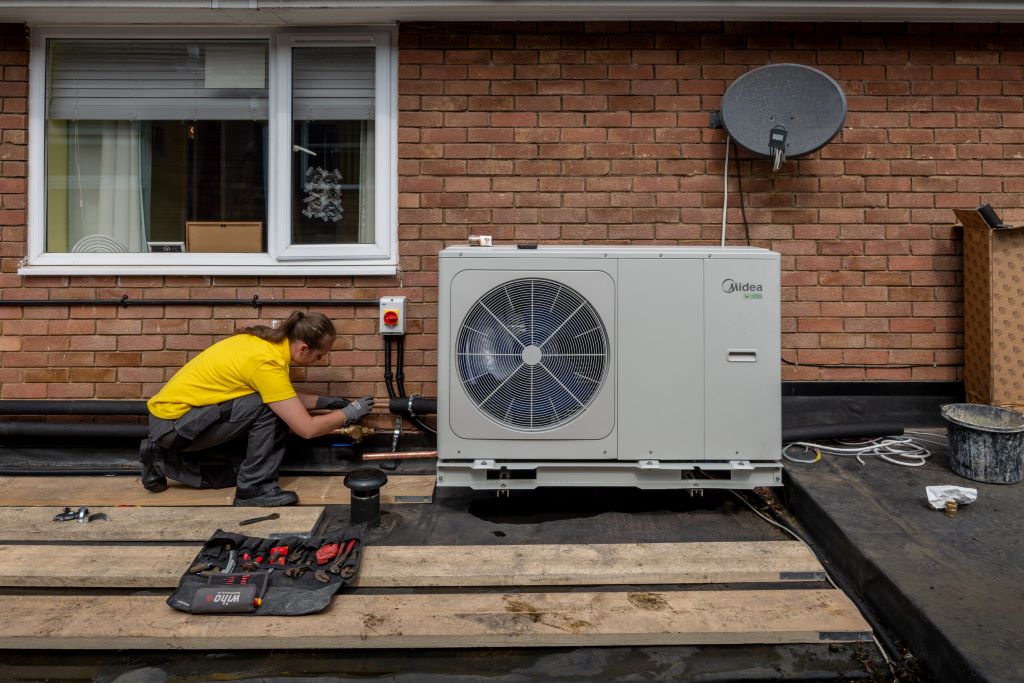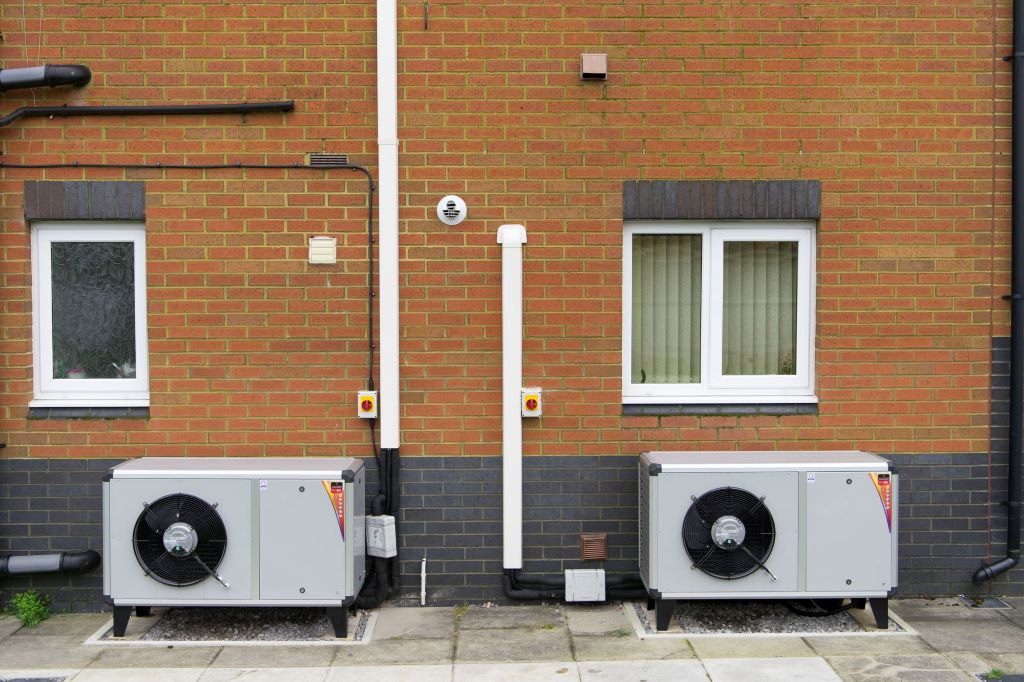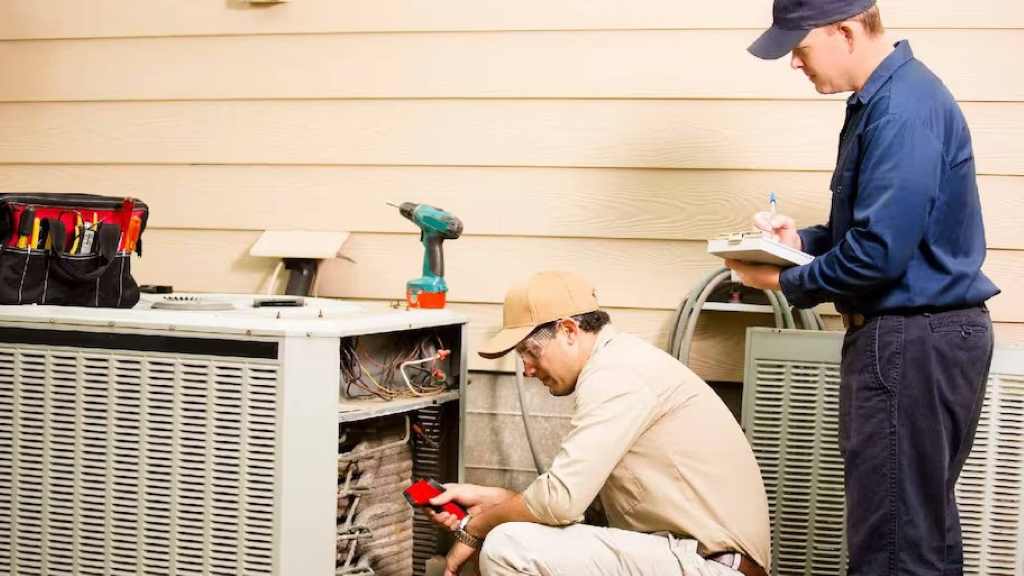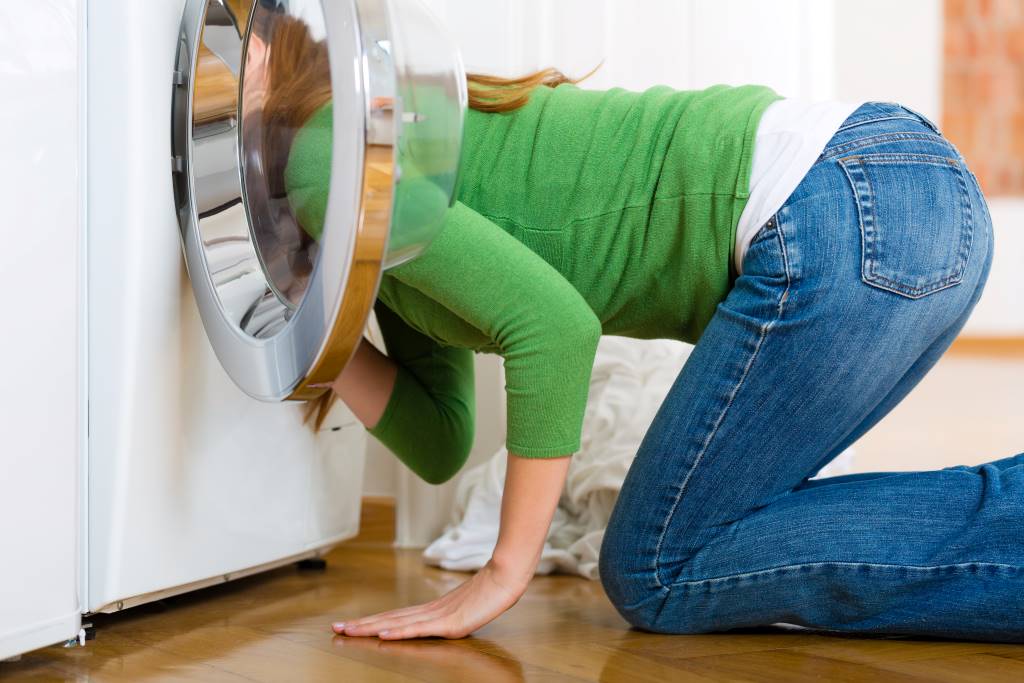Imagine a device that’s part magician and part mechanical marvel, capable of summoning warmth from thin air. That’s the beauty of a heat pump. But here’s the catch – the appearance of this wizardly contraption can vary dramatically. What does a heat pump look like? Well, it’s like asking, “What does art look like?” because it’s an art form in itself. Some are sleek and unobtrusive, blending seamlessly into your home’s aesthetics. Others flaunt their industrial prowess with confidence.
But the real question on everyone’s mind is, can heat pumps use existing ductwork? That’s where the intrigue deepens. The answer, my friend, lies in the intricate dance between technology and architecture. In this blog, we’ll unlock the secrets of heat pump aesthetics and explore the possibilities of harnessing existing ducts. Get ready to transform your home’s heating game!
The Basics: What is a Heat Pump?
Before we dive into the appearances of heat pumps, let’s make sure we’re all on the same page about what they actually do. At its core, a heat pump is like a magician for your home’s temperature – it can make it warmer or cooler as if by magic. But instead of pulling rabbits out of hats, it uses a neat trick: it moves heat from one place to another.
Imagine you have a magic wand that can transfer warmth from the air outside into your home during the winter, making it cozy and toasty. Then, during the sweltering summer months, that same wand can whisk away excess heat from your living space, keeping you cool and comfortable. That’s the magic of a heat pump!

The Many Faces of Heat Pumps
Now, let’s get into the nitty-gritty of what heat pumps look like. Heat pumps are like chameleons in the world of HVAC (heating, ventilation, and air conditioning) systems. They come in different forms to suit various needs and preferences. Here’s a rundown of the most common types:
1. Air Source Heat Pumps
Imagine a rectangular unit that sits outside your home, like a well-behaved robot sentinel. That’s the classic look of an air source heat pump. It’s often referred to as a “split system” because it has both an outdoor and an indoor unit.
Outdoor Unit: The outdoor unit is the workhorse of the operation. It usually resembles a big box or a sleek machine, often white or gray, depending on the manufacturer. It’s designed to withstand the elements, so you’ll see it steadfastly standing through rain, snow, and sunshine.
Indoor Unit: Inside your home, the indoor unit of an air source heat pump is typically more compact and unobtrusive. It might resemble a sleek wall-mounted panel or even blend in with your existing decor. Some models can even be recessed into the wall or concealed in a ceiling, making them almost invisible.
2. Ductless Mini-Split Heat Pumps
Picture a rectangular panel mounted high on the wall of a room or zone in your home. This is a ductless mini-split heat pump in action. They’re called “ductless” because they don’t rely on ductwork to distribute heated or cooled air.
Indoor Unit: The indoor unit of a ductless mini-split heat pump is usually quite slim and stylish. It can come in various colors to match your interior, and some even have advanced features like Wi-Fi connectivity and customizable LED displays.
Outdoor Unit: Like their air source counterparts, ductless mini-split systems also have an outdoor unit. It’s similar in appearance to the outdoor unit of traditional air source heat pumps, although it might be smaller depending on the model.
3. Ground Source Heat Pumps (Geothermal)
For a ground source heat pump, think of an underground network of pipes rather than a visible unit. These heat pumps tap into the stable temperature of the Earth’s crust to heat and cool your home efficiently.
Underground Loops: The most distinguishing feature of a ground source heat pump is the underground loop system. These are pipes buried in your yard or beneath your property. But don’t worry, they’re well-hidden and out of sight, ensuring your yard remains as beautiful as ever.
Indoor Components: Inside, you’ll find equipment like a heat exchanger, compressor, and blower, but they’re tucked away in a utility room or basement, out of sight and mind.
4. Water Source Heat Pumps
Water source heat pumps are like the aquatic athletes of the HVAC world. They use water from a nearby lake, river, or well as their heat source or sink, which can make them quite discreet.
Indoor Components: Indoors, you’ll find equipment similar to what’s used in air source heat pumps. It’s the source of the water that sets these pumps apart, not their appearance.
5. Hybrid Heat Pumps
Hybrid heat pumps are the Jack-of-all-trades among HVAC systems. They combine the powers of traditional heating and cooling equipment with a heat pump. As for their appearance, it largely depends on the type of system they’re paired with.
Indoor and Outdoor Units: If they’re integrated with a furnace or an air handler, you won’t see much difference from the typical appearance of those systems. However, if they’re designed as standalone units, they can resemble air source heat pumps or mini-split systems.
The Color Palette: Heat Pump Aesthetics
Heat pumps aren’t just about functionality; they also bring a dash of aesthetics to your home. Manufacturers understand that these units are on display, and many put effort into making them visually appealing.
The most common colors for heat pumps are white, gray, or black. These neutral tones blend well with most architectural styles. However, some brands offer custom color options, allowing you to match your unit to your home’s exterior or interior.
Additionally, you might find heat pumps with decorative panels or covers. These can add a touch of elegance to the outdoor unit, making it look less industrial and more like a piece of modern art.
| Color | Hex code | RGB | Description |
| Pure white | #ffffff | (255, 255, 255) | A classic choice for heat pumps, pure white is both clean and modern. It can also help to reflect light, making a small space feel larger. |
| Light grey | #d3d3d3 | (211, 211, 211) | Light grey is a neutral color that can be paired with a variety of other colors to create a desired look. It is also a good choice for hiding dirt and grime. |
| Medium grey | #808080 | (128, 128, 128) | Medium grey is a more subdued option than light grey, but it is still versatile enough to be paired with a variety of other colors. |
| Dark grey | #404040 | (64, 64, 64) | Dark grey is a bold choice that can add a touch of sophistication to any space. It is also a good choice for hiding dirt and grime. |
| Navy blue | #000080 | (0, 0, 128) | Navy blue is a classic color that can be used to create a timeless look. It is also a good choice for hiding dirt and grime. |
| Black | #000000 | (0, 0, 0) | Black is a bold choice that can add a touch of elegance to any space. However, it is important to note that black can also make a small space feel smaller. |
| Silver | #c0c0c0 | (192, 192, 192) | Silver is a modern color that can be used to create a sleek look. It is also a good choice for reflecting light, making a small space feel larger. |
| Gold | #ffd700 | (255, 215, 0) | Gold is a luxurious color that can add a touch of glamour to any space. However, it is important to use gold sparingly, as too much can be overwhelming. |
| Copper | #b87333 | (184, 115, 51) | Copper is a warm color that can add a touch of coziness to any space. It is also a good choice for pairing with other natural materials, such as wood and stone. |
| Brown | #a52a2a | (165, 42, 42) | Brown is a classic color that can be used to create a natural look. It is also a good choice for hiding dirt and grime. |
| Green | #008000 | (0, 128, 0) | Green is a refreshing color that can add a touch of nature to any space. It is also a good choice for creating a sense of calm and relaxation. |
| Blue | #0000ff | (0, 0, 255) | Blue is a calming color that can be used to create a peaceful atmosphere. It is also a good choice for making a small space feel larger. |
Size Matters: Heat Pump Dimensions
Heat pumps come in a range of sizes to suit different heating and cooling needs. The size of a heat pump is typically measured in tons or BTUs (British Thermal Units), which indicate its heating and cooling capacity. Smaller units are often used for single rooms or small spaces, while larger units can handle the climate control needs of an entire home.
These dimensions are approximate and may vary depending on the brand and model of heat pump. It is always best to consult the manufacturer’s specifications for exact dimensions.
| Heat Pump Size (Tons) | Indoor Unit Dimensions (W x H x D, in.) | Outdoor Unit Dimensions (W x H x D, in.) |
| 1 | 30 x 12 x 12 | 36 x 24 x 24 |
| 2 | 36 x 14 x 14 | 42 x 28 x 28 |
| 3 | 42 x 16 x 16 | 48 x 32 x 32 |
| 4 | 48 x 18 x 18 | 54 x 36 x 36 |
| 5 | 54 x 20 x 20 | 60 x 40 x 40 |
| 6 | 60 x 22 x 22 | 66 x 44 x 44 |
When it comes to outdoor units, you’ll notice that they vary in size based on the heat pump’s capacity. Smaller units may be as compact as 2 feet by 2 feet, while larger ones can be closer to 4 feet by 3 feet or even larger. The depth of the unit is usually around 2 feet, give or take a few inches.
Indoor units, on the other hand, tend to be more uniform in size, especially for ductless mini-split systems. They are typically around 30 inches wide, 10 inches tall, and 8-12 inches deep. These dimensions allow them to be discreetly mounted high on the wall while still providing efficient heating and cooling.

The Sound of Comfort: Heat Pump Noise Levels
Nobody wants a noisy housemate, and the same goes for your heat pump. The noise levels of heat pumps can vary, but most modern models are designed to operate quietly, ensuring your peace and tranquility.
Outdoor units tend to produce more noise than indoor units. When you stand near an outdoor air source heat pump, you might hear a gentle hum or whooshing sound as it works its magic. Ductless mini-split systems are often praised for their quiet operation, and some can be as quiet as 20-30 decibels, which is akin to a whisper or rustling leaves.
If you’re concerned about noise, look for heat pumps with a lower decibel rating, and consider installing them in a location where the noise won’t be a bother, like on the side of your house away from bedrooms or living areas.
Heat Pump Innovations: The Future Looks Stylish
As technology advances, so do the aesthetics and functionality of heat pumps. Here are some exciting innovations to look forward to:
1. Transparent Solar Panels
Imagine having heat pumps that double as transparent solar panels. Researchers are working on integrating solar technology into the panels of heat pumps, allowing them to generate electricity while still providing heating and cooling. This could be a game-changer in terms of energy efficiency and sustainability.
2. Smart and Connected Heat Pumps
The future of heat pumps is undoubtedly smart. Many manufacturers are already offering Wi-Fi-enabled heat pumps that you can control remotely using your smartphone. This means you can adjust the temperature of your home from anywhere, ensuring it’s just right when you arrive.
3. Modular and Customizable Designs
Some companies are exploring modular heat pump systems that allow you to customize the appearance and functionality of your unit. You could mix and match panels, colors, and features to create a heat pump that suits your unique style and needs.
4. Quieter Operation
Noise reduction technology continues to evolve, making heat pumps even quieter. Expect future models to operate at near-silent levels, so you can enjoy the comfort of your home without any distractions.
FAQs
- How does a heat pump work?
A heat pump works by transferring heat from one place to another. In heating mode, it extracts heat from the outside air (or another source) and brings it into your home to warm it up. In cooling mode, it removes heat from your home and releases it outside to cool the indoor space.
- Are heat pumps energy-efficient?
Yes, heat pumps are known for their energy efficiency. They can provide both heating and cooling using much less energy than traditional heating or cooling systems. This makes them a cost-effective and environmentally friendly choice for climate control.
- How long do heat pumps last?
The lifespan of a heat pump depends on factors like maintenance and usage, but on average, they can last 15 to 20 years. Regular maintenance and proper care can extend their lifespan.
- Can I install a heat pump in any home?
Heat pumps are versatile and can be installed in many types of homes. However, the suitability of a heat pump depends on factors like your climate, the size of your home, and the existing heating and cooling system. It’s best to consult with a professional HVAC technician to determine the right solution for your home.
- Do heat pumps work in cold climates?
Yes, heat pumps can work in cold climates, but their efficiency may decrease as the temperature drops. Some models are designed specifically for cold weather, while others may require a backup heating source in extremely cold conditions.
In conclusion
In the world of home comfort and energy efficiency, the question of what does a heat pump look like may have you puzzled. But here’s the truth: it depends! Heat pumps come in various shapes and sizes, from sleek wall-mounted units that blend seamlessly with modern interiors to discreet outdoor condenser units that quietly do their job.
If you’re wondering whether your heat pump existing ducts can be utilized, the answer is often yes. These innovative systems can work with your existing ductwork, saving you time and money on installation.
So, whether you’re envisioning a compact indoor unit or a discreet outdoor component, the appearance of a heat pump can be as unobtrusive as you desire. Does a heat pump cool as well as an air conditioner? The real beauty lies in the efficiency and comfort it brings to your home. Ready to take the next step? Consult a professional to find the perfect heat pump for your needs and enjoy year-round comfort, whether it’s cooling in the summer or heating in the winter.




